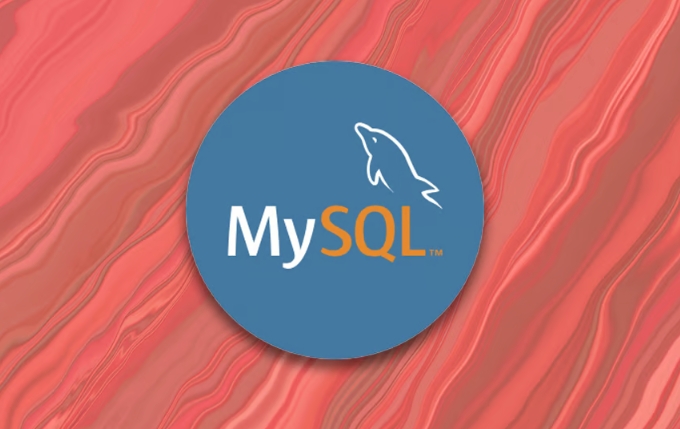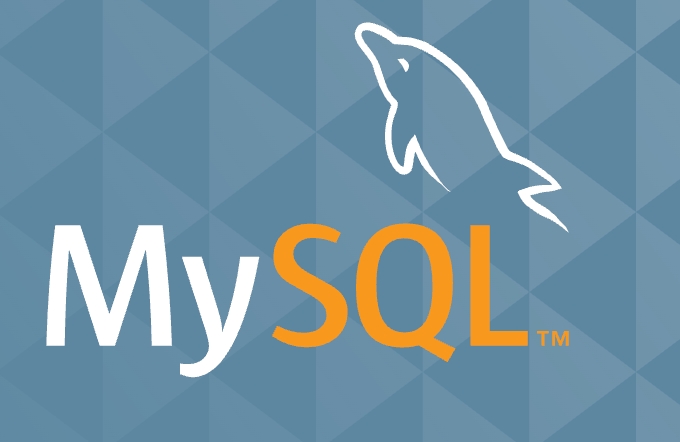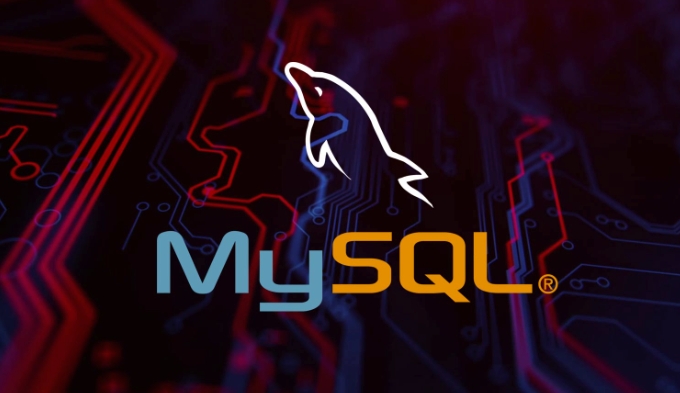MySQL resource group realizes resource scheduling through thread priority and CPU binding, and is suitable for scenarios such as high-priority query isolation, CPU resource isolation, long query and background task separation. 1. The resource group affects scheduling by binding CPU and setting thread priority, and does not support memory or I/O restrictions; 2. To create a resource group, you need to specify the type, CPU scope and priority, and use SET commands to bind threads or sessions; 3. Applicable scenarios include critical business query isolation, multi-tenant CPU allocation and batch task separation; 4. Limitations include only supporting Linux, requiring root permissions, limited priority effects, and uncontrollable memory and I/O; 5. Use suggestions include testing priority effects, combining monitoring tools, avoiding excessive binding, and considering thread pool plug-ins.

MySQL's Resource Groups were originally designed to control database resource allocation more granularly, and are especially suitable for scenarios where different workloads need to be isolated and prioritized. However, the native resource group function of MySQL is relatively limited in implementation, and currently partial control is mainly achieved through thread priority and CPU binding. If you want to use it to fine-grained database workloads, there are several key points to pay attention to.

What is a MySQL resource group?
MySQL's Resource Group feature was introduced since version 8.0 and is mainly used to bind threads to specific CPU cores and set thread priorities. Although it is not as powerful as the resource managers of some databases (such as Oracle or PostgreSQL), it can still play a certain role in resource scheduling in some scenarios.
It does not implement resource control by limiting memory or I/O, but affects thread execution priority and CPU usage through the thread scheduling mechanism at the operating system level.

How to create and use resource groups?
The basic syntax for creating a resource group is as follows:
CREATE RESOURCE GROUP high_priority TYPE = USER VCPUS = 0-1 PRIORITY = 10;
The above example creates a resource group named high_priority , of type USER (indicated for foreground query), binds CPUs 0 and 1, and sets priority to 10 (the smaller the value, the higher the priority).

Then you can bind the thread to this resource group:
SET RESOURCE GROUP high_priority FOR thread_id;
Or let the current session use the resource group:
SET RESOURCE GROUP high_priority;
Applicable scenarios and restrictions for resource groups
Applicable scenarios:
- High-priority query isolation : For example, bind report queries or critical business operations to a specific CPU and set higher priority to avoid being preempted by other low-priority tasks.
- CPU resource isolation : In a multi-tenant environment, different CPU resources are allocated to different users or applications to reduce mutual influence.
- Separation of long queries and background tasks : Assign long-running batch tasks to specific resource groups to avoid affecting real-time query performance.
Limitations and precautions:
- Only Linux platforms are supported : Resource groups depend on Linux's
libnumaandsched_setaffinityand are not supported on Windows. - Requires root permissions : Users who set up resource groups usually need
RESOURCE_GROUP_ADMINpermissions, and sometimes system-level permissions are required. - Priority influence is limited : thread priority has limited effect in the scheduling mechanism on Linux, and the actual effect may not be as obvious as expected.
- Memory or I/O cannot be limited : Resource groups currently only control CPU usage and thread priority, and memory or disk I/O cannot be limited.
Some tips in actual use
- Test priority change effect : You can use the stress testing tool to simulate concurrent queries and observe the differences in response time under different priorities.
- Combined with operating system monitoring tools : such as
top,htop, ormpstat, check whether the thread bound to the resource group is actually running on the specified CPU. - Avoid over-binding : Binding all threads to a specific CPU may lead to resource scrambling and will affect performance.
- Consider using thread pool plug-ins : If you need more fine-grained thread management, consider using MySQL's thread pool plug-ins (such as Thread Pool in Oracle's official enterprise version).
Basically that's it. Although the resource grouping function of MySQL is not perfect enough, it can indeed provide some resource scheduling flexibility in specific scenarios. If you are considering using it to optimize workload management, it is recommended to verify its effectiveness in the test environment before deploying to a production environment.
The above is the detailed content of MySQL Resource Groups for Workload Management. For more information, please follow other related articles on the PHP Chinese website!

Hot AI Tools

Undress AI Tool
Undress images for free

Undresser.AI Undress
AI-powered app for creating realistic nude photos

AI Clothes Remover
Online AI tool for removing clothes from photos.

Clothoff.io
AI clothes remover

Video Face Swap
Swap faces in any video effortlessly with our completely free AI face swap tool!

Hot Article

Hot Tools

Notepad++7.3.1
Easy-to-use and free code editor

SublimeText3 Chinese version
Chinese version, very easy to use

Zend Studio 13.0.1
Powerful PHP integrated development environment

Dreamweaver CS6
Visual web development tools

SublimeText3 Mac version
God-level code editing software (SublimeText3)
 Performing logical backups using mysqldump in MySQL
Jul 06, 2025 am 02:55 AM
Performing logical backups using mysqldump in MySQL
Jul 06, 2025 am 02:55 AM
mysqldump is a common tool for performing logical backups of MySQL databases. It generates SQL files containing CREATE and INSERT statements to rebuild the database. 1. It does not back up the original file, but converts the database structure and content into portable SQL commands; 2. It is suitable for small databases or selective recovery, and is not suitable for fast recovery of TB-level data; 3. Common options include --single-transaction, --databases, --all-databases, --routines, etc.; 4. Use mysql command to import during recovery, and can turn off foreign key checks to improve speed; 5. It is recommended to test backup regularly, use compression, and automatic adjustment.
 Calculating Database and Table Sizes in MySQL
Jul 06, 2025 am 02:41 AM
Calculating Database and Table Sizes in MySQL
Jul 06, 2025 am 02:41 AM
To view the size of the MySQL database and table, you can query the information_schema directly or use the command line tool. 1. Check the entire database size: Execute the SQL statement SELECTtable_schemaAS'Database',SUM(data_length index_length)/1024/1024AS'Size(MB)'FROMinformation_schema.tablesGROUPBYtable_schema; you can get the total size of all databases, or add WHERE conditions to limit the specific database; 2. Check the single table size: use SELECTta
 Handling character sets and collations issues in MySQL
Jul 08, 2025 am 02:51 AM
Handling character sets and collations issues in MySQL
Jul 08, 2025 am 02:51 AM
Character set and sorting rules issues are common when cross-platform migration or multi-person development, resulting in garbled code or inconsistent query. There are three core solutions: First, check and unify the character set of database, table, and fields to utf8mb4, view through SHOWCREATEDATABASE/TABLE, and modify it with ALTER statement; second, specify the utf8mb4 character set when the client connects, and set it in connection parameters or execute SETNAMES; third, select the sorting rules reasonably, and recommend using utf8mb4_unicode_ci to ensure the accuracy of comparison and sorting, and specify or modify it through ALTER when building the library and table.
 Implementing Transactions and Understanding ACID Properties in MySQL
Jul 08, 2025 am 02:50 AM
Implementing Transactions and Understanding ACID Properties in MySQL
Jul 08, 2025 am 02:50 AM
MySQL supports transaction processing, and uses the InnoDB storage engine to ensure data consistency and integrity. 1. Transactions are a set of SQL operations, either all succeed or all fail to roll back; 2. ACID attributes include atomicity, consistency, isolation and persistence; 3. The statements that manually control transactions are STARTTRANSACTION, COMMIT and ROLLBACK; 4. The four isolation levels include read not committed, read submitted, repeatable read and serialization; 5. Use transactions correctly to avoid long-term operation, turn off automatic commits, and reasonably handle locks and exceptions. Through these mechanisms, MySQL can achieve high reliability and concurrent control.
 Managing Character Sets and Collations in MySQL
Jul 07, 2025 am 01:41 AM
Managing Character Sets and Collations in MySQL
Jul 07, 2025 am 01:41 AM
The setting of character sets and collation rules in MySQL is crucial, affecting data storage, query efficiency and consistency. First, the character set determines the storable character range, such as utf8mb4 supports Chinese and emojis; the sorting rules control the character comparison method, such as utf8mb4_unicode_ci is case-sensitive, and utf8mb4_bin is binary comparison. Secondly, the character set can be set at multiple levels of server, database, table, and column. It is recommended to use utf8mb4 and utf8mb4_unicode_ci in a unified manner to avoid conflicts. Furthermore, the garbled code problem is often caused by inconsistent character sets of connections, storage or program terminals, and needs to be checked layer by layer and set uniformly. In addition, character sets should be specified when exporting and importing to prevent conversion errors
 Connecting to MySQL Database Using the Command Line Client
Jul 07, 2025 am 01:50 AM
Connecting to MySQL Database Using the Command Line Client
Jul 07, 2025 am 01:50 AM
The most direct way to connect to MySQL database is to use the command line client. First enter the mysql-u username -p and enter the password correctly to enter the interactive interface; if you connect to the remote database, you need to add the -h parameter to specify the host address. Secondly, you can directly switch to a specific database or execute SQL files when logging in, such as mysql-u username-p database name or mysql-u username-p database name
 Setting up asynchronous primary-replica replication in MySQL
Jul 06, 2025 am 02:52 AM
Setting up asynchronous primary-replica replication in MySQL
Jul 06, 2025 am 02:52 AM
To set up asynchronous master-slave replication for MySQL, follow these steps: 1. Prepare the master server, enable binary logs and set a unique server-id, create a replication user and record the current log location; 2. Use mysqldump to back up the master library data and import it to the slave server; 3. Configure the server-id and relay-log of the slave server, use the CHANGEMASTER command to connect to the master library and start the replication thread; 4. Check for common problems, such as network, permissions, data consistency and self-increase conflicts, and monitor replication delays. Follow the steps above to ensure that the configuration is completed correctly.
 Using Common Table Expressions (CTEs) in MySQL 8
Jul 12, 2025 am 02:23 AM
Using Common Table Expressions (CTEs) in MySQL 8
Jul 12, 2025 am 02:23 AM
CTEs are a feature introduced by MySQL8.0 to improve the readability and maintenance of complex queries. 1. CTE is a temporary result set, which is only valid in the current query, has a clear structure, and supports duplicate references; 2. Compared with subqueries, CTE is more readable, reusable and supports recursion; 3. Recursive CTE can process hierarchical data, such as organizational structure, which needs to include initial query and recursion parts; 4. Use suggestions include avoiding abuse, naming specifications, paying attention to performance and debugging methods.






